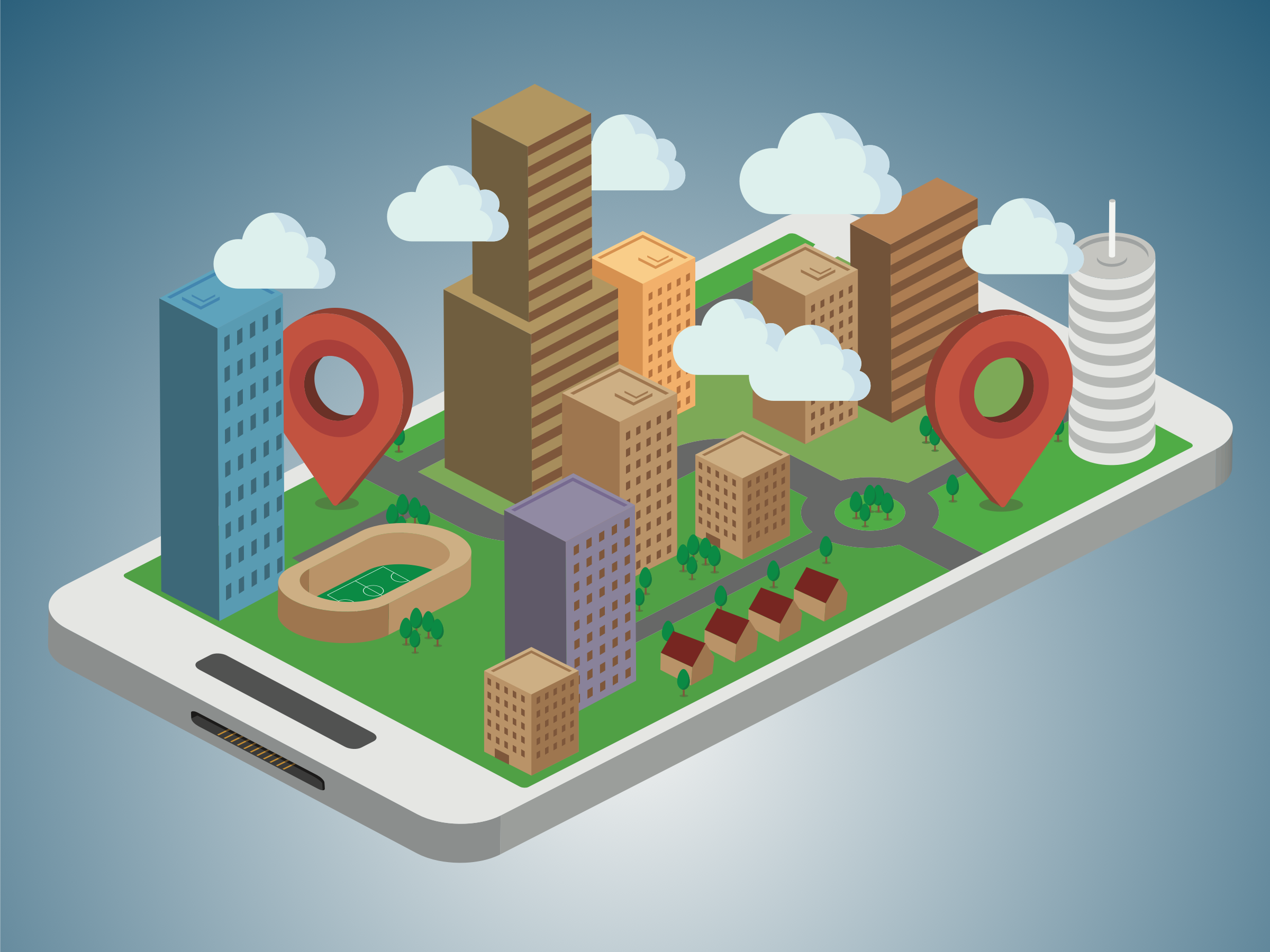Table of Content
Krasamo has been building geofencing applications for more than 12 years.
Here, we will explore geofencing concepts to spark discussion with customers interested in creating a geofencing app.
How Does Geofencing Work?
Geofencing is a virtual perimeter surrounding a geographical area of interest.Geofence apps have a feature that triggers pre-programmed actions when devices cross the predetermined boundaries or geofence line.
Geofencing apps provide useful information and enhance user experiences by combining the user’s location and proximity to a specific point (location) of interest.
IoT developers create the functionality to add location features and deliver events to the geofencing app that are defined by coordinates (latitude and longitude), radius, duration, and transition.
A virtual boundary is defined and represented on a map. For example, geofencing uses a circle to view the distance and location of a device with a radio that defines the boundaries. A polygon is also used for defining specific boundaries.
Geofencing can be defined and activated automatically based on the user’s location, distance range, perimeter, and other conditions that trigger alert notifications to the geofencing app when assets move in and out of the geofences.
Geofencing apps assist users through an interface to specify boundary settings, draw geofences on a map, or specify a point location with coordinates (latitude and longitude) and distance relative to that location. A user group with member IDs is associated with the corresponding mobile devices used to identify a geofence status for each member, within or outside of the geofence.
Geofencing in Location Services
Operating systems (iOS and Android) provide native location services with defined interfaces for locating the current device position, using the device components such as Wi-Fi, Bluetooth, GPS, and cellular hardware, and providing geographic data.
The geofencing app can be configured to track a device’s location, monitor region boundaries, use the device as a beacon and detect other beacons, and for geocoding, compass headings, sensor signals, etc.
You can create geofencing apps using Amazon Location Services—location-based service (LBS) that provides location, geofencing areas of interest, and geospatial data to applications using Amazon Location Service SDKs and natively integrate with AWS. In addition, Amazon services use Esri’s or HERE location services to provide maps, geocoding (convert addresses into coordinates), and reverse geocoding.
Geofencing through Third-Party Apps
Smart home apps such as Google Assistant or Apple Home App allow the creation of location triggers for selected devices. A geofencing app can also be enabled using “if this, then that” commands (IFTTT) to create your recipe.
Geofence Map
A location-based service consists of location services and maps. With maps support in a geofencing app, you can visualize your data on top of a map and provide geographical context, display, annotation, and navigation capabilities, improving the user experience.
Geofence apps featuring map views and display information are provided by the Map Kit framework in iOS and the Maps SDK for Android.
You can also add maps to your application by adding Amazon Location Service Maps’ front-end mobile or web software development kits (SDKs).
Use Cases
The accuracy and frequency of reporting position updates to your geofence app will be a factor that determines how to create the instances, the power usage, and the configuration to manage reporting.
Users can benefit from a geofencing app by creating routines or automation. For example, turning the AC off when you leave the house, locking your doors, turning lights off, etc.
In industrial or business applications, geofencing is a vital component for fleet and asset tracking, optimizing delivery routes, geo-marketing, map visualization, etc.
Architecture, Methods, and Variations
Geofencing apps can implement various architectures, methods, and variations with specific protocols and methodologies to suit specific use cases. Geofencing can be classified by type (fixed or mobile) and by its components.
Best Geofencing App Features
Geofencing apps take action in the form of alerts and notifications, reminders, tracking assets, entering or exiting areas, marketing campaigns, automating time cards, etc.
Geofencing creates many opportunities for businesses and IoT geofencing solutions, with many common uses, as mentioned below:
- Location Tracking App—Fleet
- Management
- Time Clock App
- Thermostat App
- Real State App
- Smart Home Apps
- Employee Tracking
- Attendance App
- Events Geofencing Apps
- Home Assistant App
- Car Apps
- Pet Tracking App
- Livestock Tracking App
- Advertising Apps
- Law Enforcement Apps
- Smart Cities Apps
- Drone Apps
Geofence App Connectivity
Mobile Networks. Mobile networks can be used to communicate with the geofencing app and create notification settings and preferences through SMS text messages, instant messages, automated telephone calls, emails, and the like.
GPS Tracking. GPS tracking with geofencing and mobile apps is a well-known technology for use outdoors
Bluetooth Beacons. Beacons can be created to communicate with the geofencing app using Bluetooth inside warehouses when GPS or mobile networks are unavailable. Beaconing asset tags can also be used. Bluetooth geofencing allows you to turn any device into a beacon. Beacon signal strength helps to determine the proximity and accuracy of its estimation.
Radio Frequency Identification (RFID) Systems. RFID technologies are used for short-range location tracking.
MQTT. MQTT is a standard lightweight IoT protocol (publish/subscribe) messaging transport that connects devices with minimal network bandwidth. It’s about real-time access to the IoT device status and position, with bi-directional communication, transmitting MQTT messages across multiple nodes through an MQTT broker running on a cloud platform.
Popular Brands Using Geofencing Technologies
- Ring
- Ecobee
- Arlo
- Eufy
- Lennox
- MyQ Garage
- Nest Thermostat
- Philips Hue
- Schlage












I’m low-key obsessed with this post about building a geofencing app! 🤩
I love how you’ve listed out the various applications of geofencing! One thing worth mentioning is that these apps often rely on real-time location data, which can be quite a challenge to handle. Krasamo’s approach seems like a good starting point, but don’t forget about the importance of edge computing and data processing in making geofencing truly efficient. Geofencing apps have a lot of potential, but we need to think about scalability and latency as well.
I wholeheartedly concur with the author’s analysis on the efficacious integration of geofencing technologies, particularly in conjunction with geofencing apps. Beacons and MQTT protocols show immense potential for enhancing situational awareness. Excellent article!